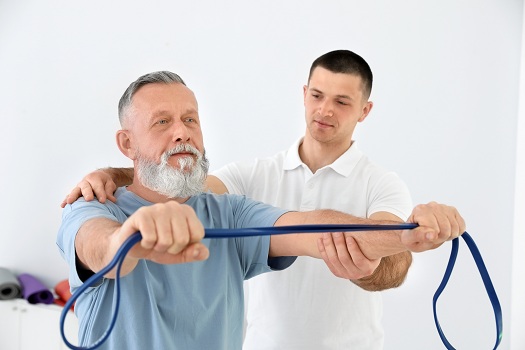Stroke Rehabilitation

Stroke rehabilitation is a specialized therapeutic process aimed at helping individuals regain lost abilities, improve mobility, and restore independence following a stroke. It involves a multidisciplinary approach combining physiotherapy, occupational therapy, speech therapy, and psychological support.
Goals of Stroke Rehabilitation
- Restore movement and strength
- Improve balance and coordination
- Enhance communication skills (for speech impairment)
- Promote cognitive and emotional recovery
- Regain independence in daily activities
Phases of Stroke Rehabilitation
- Acute Phase (First Few Weeks Post-Stroke)
- Early mobilization to prevent complications
- Basic movement exercises
- Swallowing and speech assessment
- Subacute Phase (Weeks to Months Post-Stroke)
- Intensive physiotherapy for motor recovery
- Occupational therapy for self-care skills
- Psychological counseling for emotional support
- Chronic Phase (Months to Years Post-Stroke)
- Continued rehabilitation exercises
- Adaptive techniques for long-term independence
- Support groups and lifestyle modifications
Stroke Rehabilitation Techniques
- Physiotherapy: Strength, balance, and mobility exercises
- Occupational Therapy: Training in daily activities and adaptive equipment use
- Speech Therapy: Communication exercises and swallowing therapy
- Cognitive Rehabilitation: Memory, problem-solving, and attention training
- Emotional Support & Mental Coaching: Coping strategies, motivation, and stress management
Importance of Early Rehabilitation
Starting rehabilitation as early as possible increases the chances of recovery by preventing muscle stiffness, improving neuroplasticity, and enhancing overall well-being.
